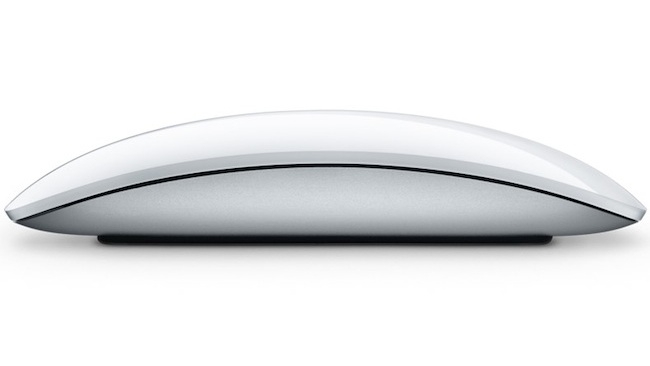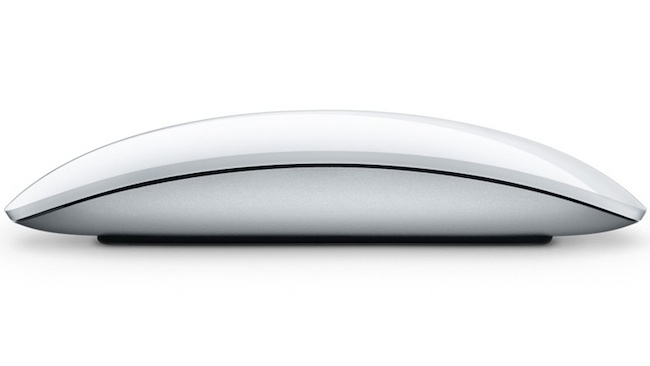
 Where evolution takes you: Apple's Magic Mouse
Where evolution takes you: Apple's Magic Mouse
Douglas C Englebart, the man who revolutionised the way we interact with computers by inventing the mouse in the 1960s, has died aged 88. Of mice and men: Andy Stout.
To understand Englebart’s accomplishment you have to realise just how far outside the box he was thinking in the mid 1960s. In the 1940s, the worldwide market for computers was thought to be extremely specialised and probably limited to certain government agencies. A decade later Isaac Asimov wrote the famous short story ‘The Last Question’, with the first of his Multivac machines taking up ‘miles and miles’ of underground caverns in 2061, and where its human attendants ‘fed it data, adjusted questions to its needs and translated the answers that were issued’.
There was a modern priesthood established, in other words. You went to the acolytes, the acolytes transcribed your question into stacks of punched cards, these were fed into the oracle, the oracle spoke, and its message was retranslated back for your puny, human benefit. Humans, and ones untrained in the computer sciences at that, interacting directly with computers? What would be the point? Computers being fast enough to cope with realtime input? Don’t be daft.
The Mother of all Demos
Douglas C Englebart changed all that, first porting his World War II experiences of sitting in front of radar screens to the realisation that individual workstations could be created for users to interact with the oracles of their day, and then coming up with the device to control them. The New York Times takes up the story of his presentation to the December 1968 Fall Joint Computer Conference in San Francisco, one that has gone down in history as ‘The Mother of all Demos”.
“For the event, he sat on stage in front of a mouse, a keyboard and other controls and projected the computer display onto a 22-foot-high video screen behind him. In little more than an hour, he showed how a networked, interactive computing system would allow information to be shared rapidly among collaborating scientists. He demonstrated how a mouse, which he invented just four years earlier, could be used to control a computer. He demonstrated text editing, video conferencing, hypertext and windowing.”
It is hard to think of many other single events in science that showcased that sheer amount of innovation in a single hour. The initial mouse was a pine box with a single button covering two wheels to supply positional X-Y data, and while he refined it from there – even thinking at one point that it might host as many as 10 buttons – it was not until 1984 and the launch of the Macintosh that the device came into the mass market.
In fact, so far ahead of the curve was Englebart himself that he failed to make much money out of the mouse while he waited for the rest of the world to catch up – the patent expiring and the technology passing into the public domain in 1987.
Gorilla Arms
Nearly thirty years on from its introduction, and the mouse still very much rules the human computer roost. Yes, there are specialist devices for specialist applications – the pen and tablet, trackballs for grading etc – and touchscreens have made their presences felt over recent years, but the problems of ‘gorilla arm syndrome’ still curtail their use on vertical displays and mean that the mouse is still a complementary part of any human/computer control system. Here’s Steve Jobs talking in 2010: “We’ve done tons of user testing on this and it turns out it doesn’t work. Touch surfaces don’t want to be vertical. It gives great demo, but after a short period of time you start to fatigue, and after an extended period of time, your arm wants to fall off.”
And if the mouse is just a part of the control system now (and never forget it has always been a complementary device, being first married to a keyboard) it will almost certainly remain that way in the future. Voice recognition is the latest control technology to threaten its role, but as anyone who has tried to wrestle Siri to do anything meaningful for them on iOS will attest, it’s not a technology that is given to operating beyond strictly delineated commands. Besides, it’s slow. In the time it takes me to say “make the word ‘Siri’ in the previous sentence italic,” I’ve picked up the mouse and done it – and the software hasn’t tried to book a table at my local Italian restaurant or text my mother-in-law instead either.
Of course, there are even faster technologies being developed, but subvocalisation is still some way off and notoriously difficult to control, while direct mind control is – at least for anything meaningful – frankly science fiction still. Even at the end of Asimov’s ‘The Last Question’, the godlike entity that was the whole of humanity still talks to its computer. If Asimov had though of the mouse, it would probably be using that as well.
Tags: Technology


Comments